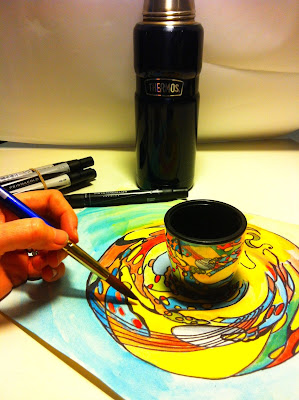"Samantha Grace" Transparent watercolor on 140. lb European-milled, cotton rag paper. 12x18
This beautiful baby portrait was commissioned by the little girl's grandmother. The following photographs show the watercolor pouring process that I used to complete the work.
First, I sketch my image in graphite and then use drawing gum to mask out the parts that I want to leave white.
Next, I mix up paint, wet the paper, pipe the paint on to the paper with a pipette and let the excess paint run off the bottom left corner.
Once completely dry, I brush on another layer of drawing gum in the areas that I want to keep light.
Then I pipe on another layer of paint.
Once that layer is totally dry, then I add more drawing gum to the areas I want to maintain.
Then I pipe on another layer of paint...
Next, I add even more drawing gum and pipe on another layer of paint.
This is what it looks like when all layers have been poured and the drawing gum is ready to be peeled off to reveal the painting underneath.
I use a rubber cement pick up to remove the drawing gum
The layers underneath are revealed and now I know what I'm working with.
I use my scrubber brush to soften lines and move paint around.
I used staining paint this time, so the scrubber isn't cutting it. I have to pull out the big gun: a Mr. Clean Eraser.
Now I'm getting somewhere with the scrubbing. Time to start adding details.
Sometimes instead of mixing up paint, I use a scrubber to activate the paint that is already on the paper and then use that as a well to pull from. I dip a brush into the activated paint and use that to create details on other parts of the image.
I continue to add details until I am satisfied.
Finally, the finished product! Meet Samantha Grace. Leave a comment and tell me what you think.
Do you want to own a poured watercolor of your own? Contact me.
Questions on how much a watercolor like this is worth? See here.
Wondering how long it takes to create one of these pieces? This post explains.
Would you like to see more step by step examples? Check out these posts:


























































